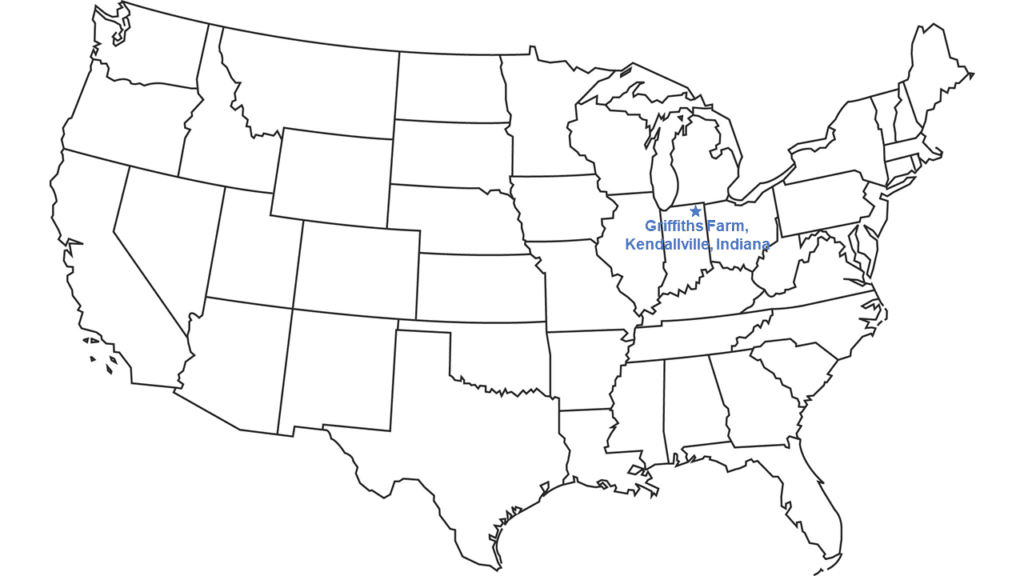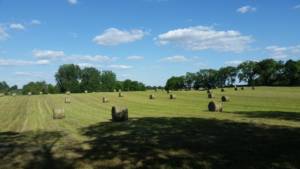 2020 is just about in the books.
2020 is just about in the books.
What a year it has been, with weather, equipment, crop price and trade challenges. And who would have thought that since the article that introduced me on this site, a global pandemic would impact everything we do?
As farmers, we continued nearly as normal in our daily farm duties. However, COVID-19 impacted mid-season crop prices, and it had a catastrophic effect on the beef, swine and dairy industries. All these prices have normalized to some extent. The situation thrust upon us was something new and unexpected, but now it’s just one more thing we will have to keep in mind as we make financial decisions in the future.
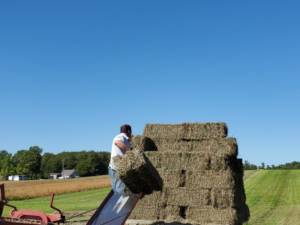 The weather in northeast Indiana, my region of the U.S. Midwest, has held up incredibly well. The corn that tested 28% moisture in early November stayed in the field until I finally harvested it on November 20. At that point, it tested 19% moisture, which is much better for drying and storing, and it yielded about 12 metric tons/hectare, or 190 bushels per acre, despite some wildlife and wind damage. I was pleased.
The weather in northeast Indiana, my region of the U.S. Midwest, has held up incredibly well. The corn that tested 28% moisture in early November stayed in the field until I finally harvested it on November 20. At that point, it tested 19% moisture, which is much better for drying and storing, and it yielded about 12 metric tons/hectare, or 190 bushels per acre, despite some wildlife and wind damage. I was pleased.
As always, I started selling hay in late November and early December – both large round bales and small square bales. The dry summer left me with 60% of my normal yield, which means good quality hay is in high demand. Prices at hay auctions have reached nearly $420/metric ton, or $460/U.S. ton. I have hay that would bring that price, but then loyal customers I have had for years would search elsewhere. With less hay than usual, I’m choosing to make the long-term financial decision to serve loyal customers and make sure I can feed my cattle, rather than charging top dollar.
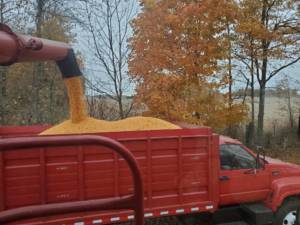 I will continue to deliver hay through early May 2021. I will start baling hay again in late May. As I look back at 2020, I remember that I made hay on November 7. I realized I am never done with hay. I handle each small square hay bale 4 to 5 times. Despite low yields, I still picked up and moved more than 680 metric tons, or 750 U.S. tons, worth of hay this year. That’s probably part of the reason my body hurts.
I will continue to deliver hay through early May 2021. I will start baling hay again in late May. As I look back at 2020, I remember that I made hay on November 7. I realized I am never done with hay. I handle each small square hay bale 4 to 5 times. Despite low yields, I still picked up and moved more than 680 metric tons, or 750 U.S. tons, worth of hay this year. That’s probably part of the reason my body hurts.
If there’s a drawback to a nice fall, it’s that I just continue working.
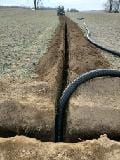 November and December allowed me to finish chopping corn stalks in hopes of more decomposition for soybean planting ease in 2021.
November and December allowed me to finish chopping corn stalks in hopes of more decomposition for soybean planting ease in 2021.
I also hooked up my chisel plow. Though I am 100% no-till, roughly every 4 years I make two passes with the chisel along any woods and tree lines in my fields. I do this because over time, tree roots creep into the fields. It’s enough for the crop to compete for sunlight in these spots in my fields, let alone competing for the moisture that the tree roots rob. The chisel cuts into the soil and helps alleviate moisture competition by breaking up small, hair-like tree roots. I also use the chisel to break up soil compaction in the spots where I park trucks during harvest to haul the crop out of the field. However, I make a conscious effort to park the trucks near the trees, so I minimize tillage.
I took the opportunity to put some drainage tile into a few hillsides that have excess moisture in them to better manage that water. A farm my size has trouble hiring outside contractors to do small projects like this, as they prefer larger projects. And I don’t blame them. So once again, this is a one-man operation. Getting in and out of equipment to make tile connections and check grades, or the slope of the ground, is a slow, tedious process. However, doing the work myself will show up in my bottom line, so from a financial standpoint, I don’t mind.
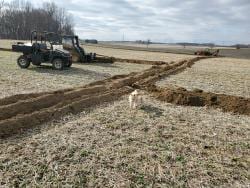
2020, if nothing else, was eventful for everyone. No matter who you are, the events of the year had implications of some degree. The ag sector was not immune. In my opinion, farmers as a whole dealt with the challenges relatively well. We deal with adversity all the time, like changing weather, regulations and financial disruptions. But we are steadfast in our goals. Resilience and the ability to adapt is what keeps us in business. There’s nothing good that comes out of a world pandemic, but it’s my hope those not involved in agriculture will understand what we deal with on a daily basis – to come in for the night only to wake up to a whole host of unexpected challenges.
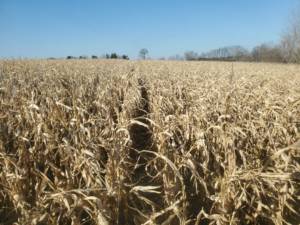 I would like to thank U.S. Soy for allowing me to share some of the things I do here on my farm in northeast Indiana. I’ve described waiting for spring, adapting for planting, the impact of weather, growing crops, harvesting soybeans and more.
I would like to thank U.S. Soy for allowing me to share some of the things I do here on my farm in northeast Indiana. I’ve described waiting for spring, adapting for planting, the impact of weather, growing crops, harvesting soybeans and more.
2020 has not been any different for me than for most of you. I’ve had plenty of challenges, from a wet spring to a dry summer, equipment breakdowns with limited availability to parts, and chronic pain that would sideline some people. I’ve had personal issues, financial stress and the feeling of isolation from the rest of the world. I’ve done things I never imagined, like reserving tickets to be able to attend Christmas Mass. And to add to the challenges, my help has been constantly complaining about her workload, so I decided to bring in additional full-time help for 2021.

Thankfully, the Christmas season has me reflecting on the positives of the year: The joyous wedding of my son, a near-perfect fall, rising commodity prices, all the farm improvements made because I didn’t go anywhere, and medical breakthroughs that will hopefully bring the COVID-19 nightmare to an end. Nothing truly catastrophic happened on my farm that I can’t deal with.
In closing, with the grace of God in 2021, I will again plant the seeds that will bring about the harvest of some of the most sustainable grains in the world. Thank you, and Merry Christmas!
